- Growth Case Studies - Product, Marketing and Growth Knowledge
- Posts
- How Canva's Templates Drive User Acquisition, Onboarding, Retention and Revenue
How Canva's Templates Drive User Acquisition, Onboarding, Retention and Revenue
A growth case study on Canva Templates, the user and business problems it solves for acquisition, onboarding, retention and revenue.

Last month, I taught the Growth Loops class as part of Treford’s Product Marketing Accelerator course. While sharing Zapier’s SEO growth loop with the class, one student mentioned Canva’s Templates as an SEO growth loop. This was interesting, so I looked at Canva’s templates after the class. I realised that Canva’s Templates solve problems beyond SEO and beyond user acquisition.
This case study examines Canva’s templates and the customer and business issues they solve at scale.
But before we get into it, let’s pay some bills from this month’s sponsors, Marketing Millennials, Masters in Marketing and Mindstream.
The best marketing ideas come from marketers who live it. That’s what The Marketing Millennials delivers: real insights, fresh takes, and no fluff. Written by Daniel Murray, a marketer who knows what works, this newsletter cuts through the noise so you can stop guessing and start winning. Subscribe and level up your marketing game.
As usual, feel free to skip to sections that interest you.
Table of Contents
Canva’s Success
Founded on January 1st 2013, by Melanie Perkins, Canva is an Australian graphic design software company. The company has 220 million users and an annual recurring revenue of $2.5 billion, while marking its 8th year of profitability. Canva is known for democratising design to non-designers, and its templates are a core part of its value proposition.
A Quick Intro to Growth Loops
Growth Loops are an interesting concept for product, marketing and growth professionals. A growth loop is a self-reinforcing, iterative and circular system that drives specific outcomes. The core principle of a loop is that the output of one cycle — such as a new landing page, a successful referral, or a piece of user-generated content — is systematically reinvested as the input for the next cycle. This creates a compounding effect that drives continuous and sustainable growth.
Here’s what a growth loop looks like:
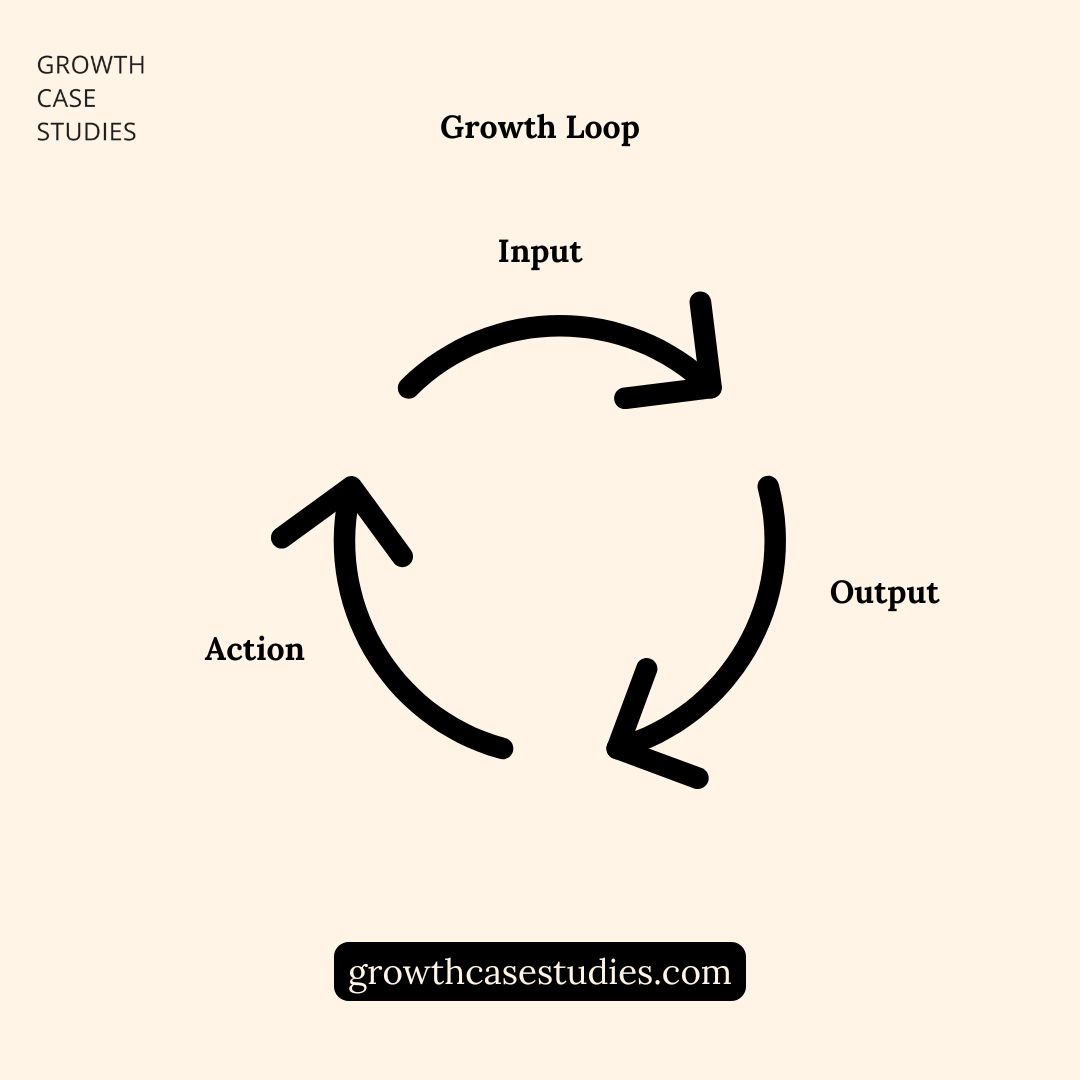
Typically, growth loops solve one problem or two problems. Canva templates are brilliant because they begin a growth loop that solves multiple problems for the user and the business. These templates are a major growth driver for Canva; several thousand digital creators have built and sold them. In the next section, I’m going to highlight these problems and how templates solve them.
How Canva Templates Solve 4 Growth Problems
1. Canva Templates solve user acquisition via Search Engine Optimisation.
Search engines are the number one channel for direct-response marketing. When a person searches on Google, they are looking for answers to questions, products that solve their problem, or information about a topic or idea.
Canva organises and exposes its templates to search engines to solve for user acquisition. This creates a self-sustaining growth loop. Each template or template category is exposed to and indexed by search engines, improving its visibility and driving new users to Canva.
When I search “birthday card template”, Canva is the first
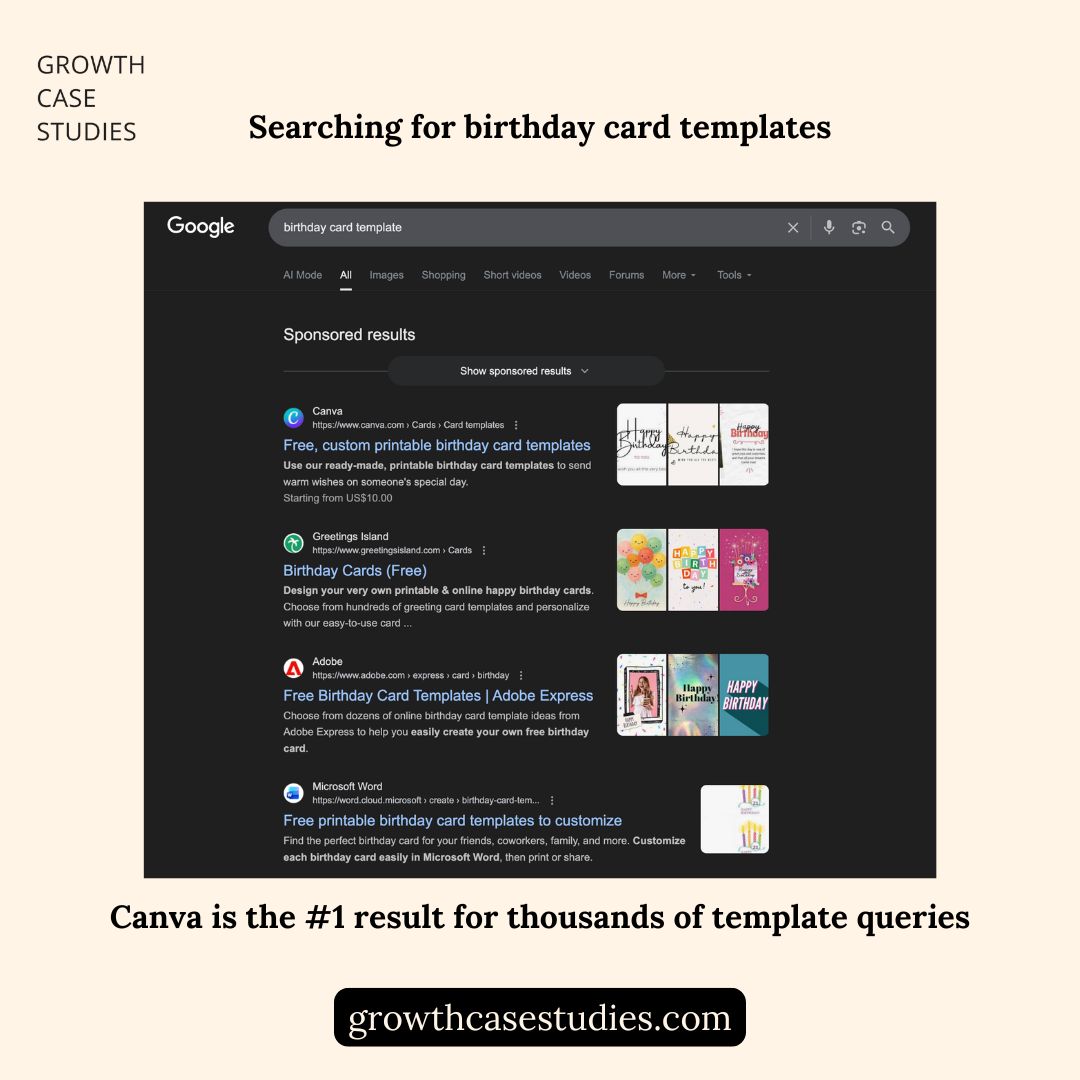
result. Other design-focused products, such as Adobe Express and Greetings Island, have followed Canva’s pioneering approach by creating templates and exposing them to the web.
Canva has built thousands of templates across its product capabilities. It has templates for emails, presentations, social media, videos, documents, print, whiteboards, spreadsheets, and much more. These templates are neatly organised via their sitemap.
Let’s return to my example of the birthday card. The company features a landing page specifically for birthday card templates, but it also offers much more. The page acts like a marketplace for birthday card templates.
It includes filters for format, style, theme, features, price, and colour. Combining all the possibilities that a user might search for. Each filter or sub-filter is another page exposed to search engines for better SEO.
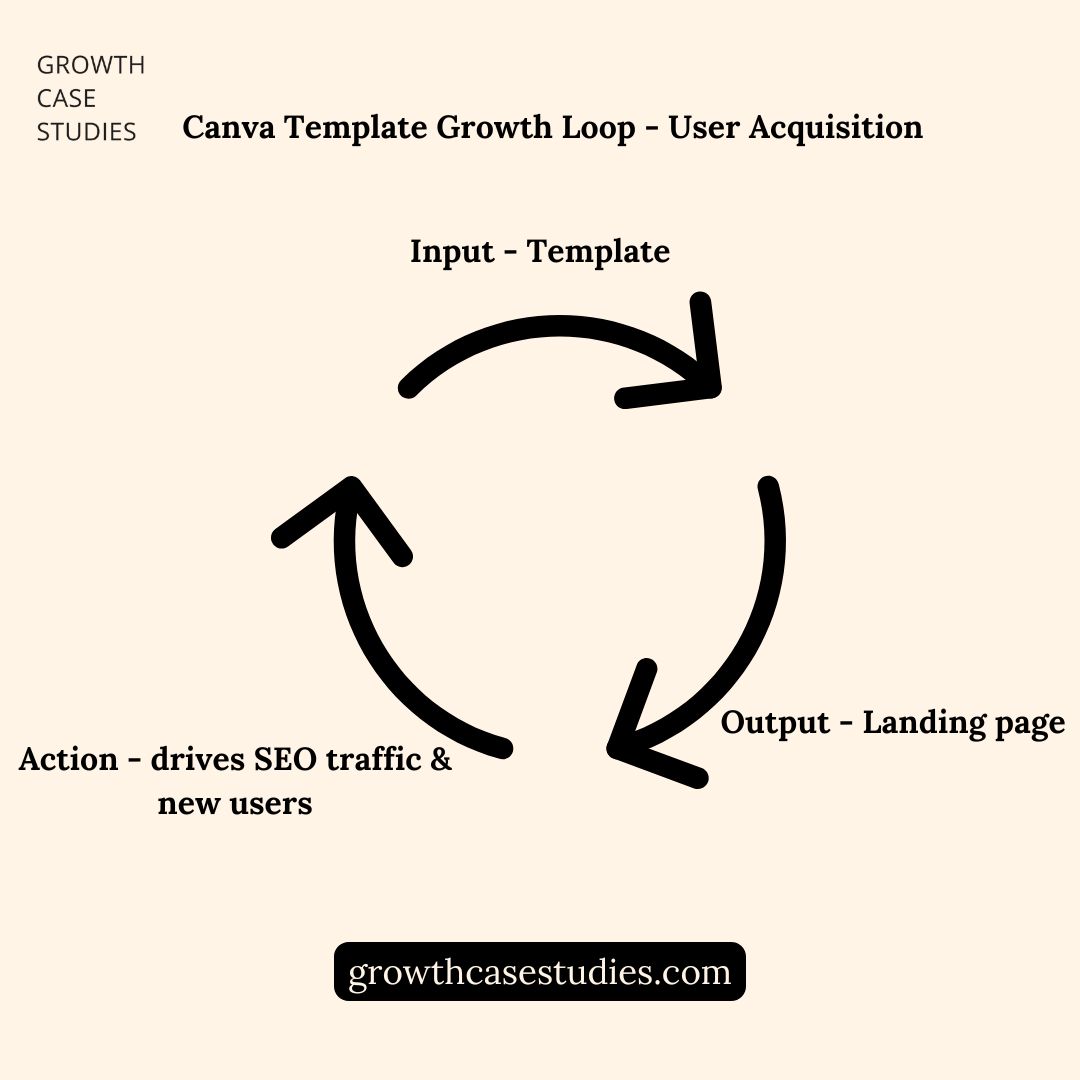
In addition, the page is appropriately designed for search engines with meta descriptions. Each card and its corresponding image presented is also optimised for search engines, with appropriate file names and alt descriptions.
I peeked under the page to see its HTML code. I found that Canva was duplicating all these pages across 28 languages and regions, ensuring that each page reached prospective users globally.
2. Canva Templates solve a cold start and onboarding problem.
Canva templates solve the cold-start problem. Non-designers need help creating high-quality assets and documents.

In a case study of TikTok’s For You feature, I talk a bit about the cold start problem:
The cold start problem is not limited to social platforms but is also prevalent among various technology products. How do we ensure that a new user becomes familiar with our product and starts using it to get value?
Without templates, a new Canva user sees only a blank canvas. A blank canvas raises the barrier to entry for non-designers who might try out Canva and think, “Where do I get started?”, “How do I design?”, “What can I create?”. Templates accelerate onboarding for new users and help them become familiar with Canva as a design tool. With templates, users reach the Aha moment faster.
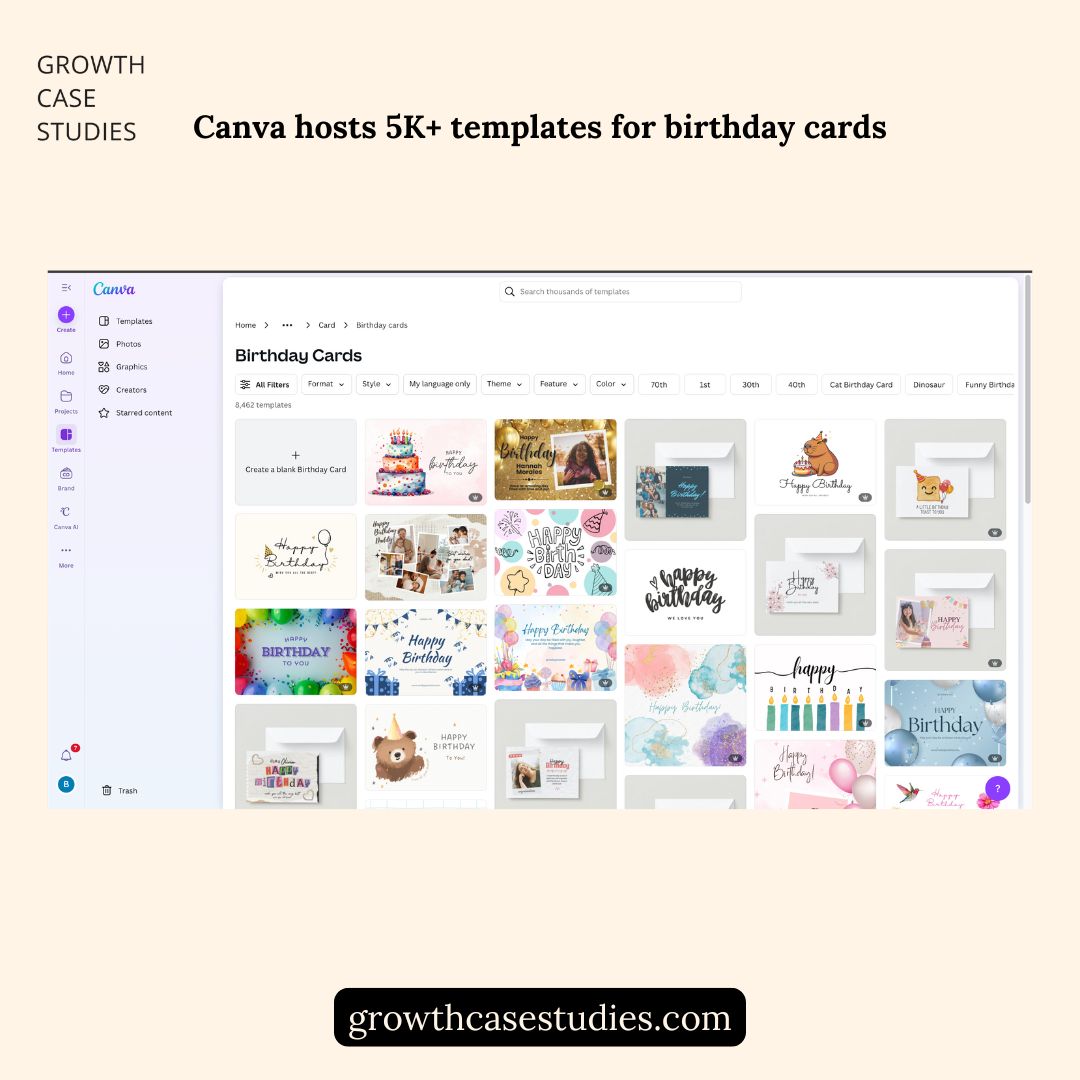
For anyone who wants to design anything, there’s a Canva template for that.
Master ChatGPT for Work Success
ChatGPT is revolutionizing how we work, but most people barely scratch the surface. Subscribe to Mindstream for free and unlock 5 essential resources including templates, workflows, and expert strategies for 2025. Whether you're writing emails, analyzing data, or streamlining tasks, this bundle shows you exactly how to save hours every week.
3. Canva templates enable retention.
The templates library spans several types of celebrations, events, social media posts, documents, and whiteboards.
Templates serve the same purpose for existing Canva users. By providing templates for different use cases, Canva ensures its users keep returning. Users can adapt templates to match their brand style or desired design.
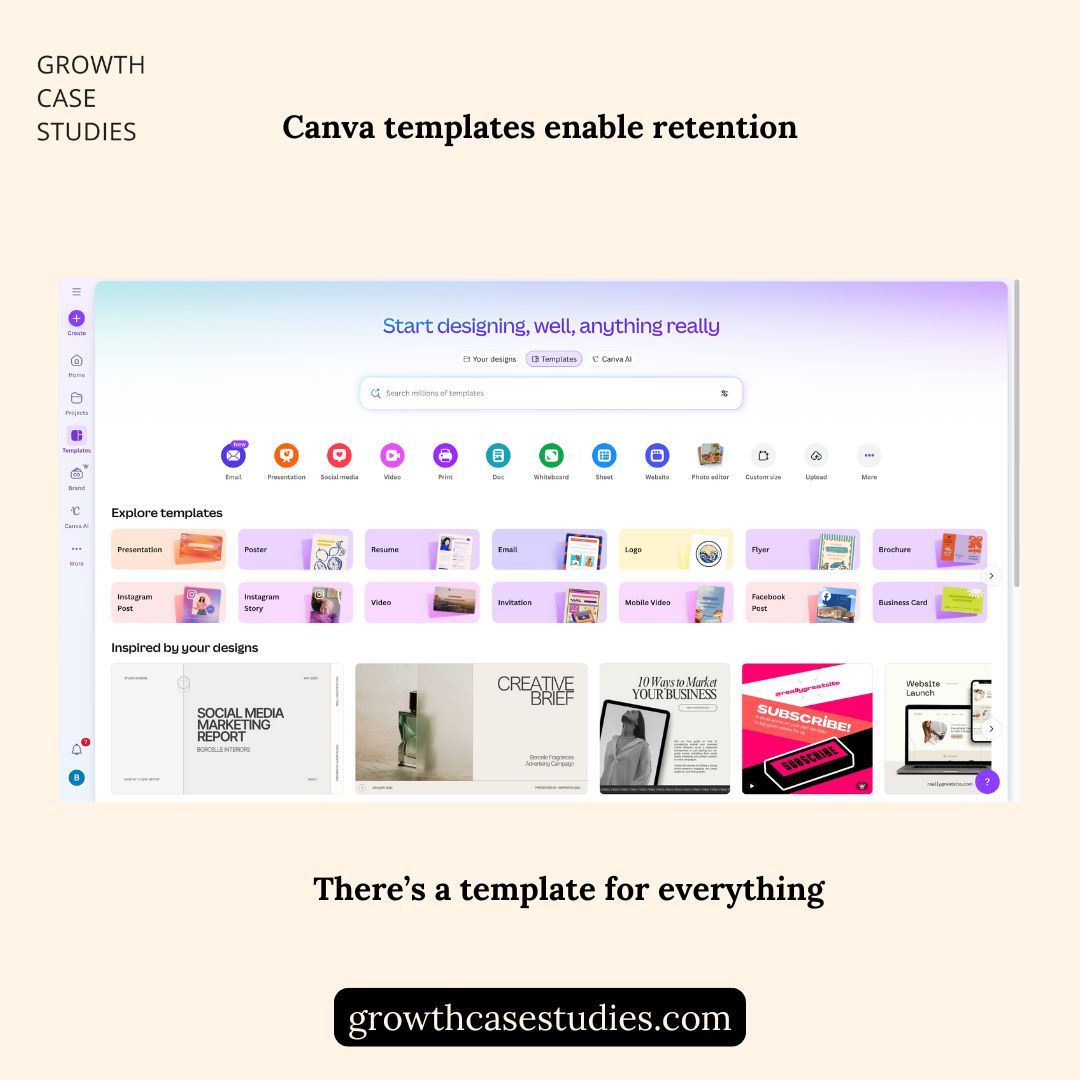
Additionally, Canva regularly updates its template library to reflect the latest design trends and user preferences, making it a versatile resource for both personal and professional projects.

This variety helps users find inspiration quickly, streamline their workflow, and create high-quality designs without starting from scratch. The customisable nature of these templates also allows users to add their personal touch, ensuring each project remains unique and tailored to their individual needs.
Finally, Canva's user-friendly interface simplifies browsing, selecting, and editing templates, making design accessible even to those with little to no prior experience.
4. Canva Templates solve a revenue problem
Not all Canva Templates are free. The platform provides premium options from Canva's exclusive collection. These premium templates are available only to users who subscribe to a paid plan, offering more advanced, professionally designed choices.

The variety and quality of premium templates serve as strategic tools that Canva uses to encourage free users to upgrade to paid subscriptions. Users who subscribe to the Canva Pro or Canva Business plans gain access to an extensive library of over 2 million templates, enabling them to create polished, customised designs for presentations, social media, marketing materials, and more.
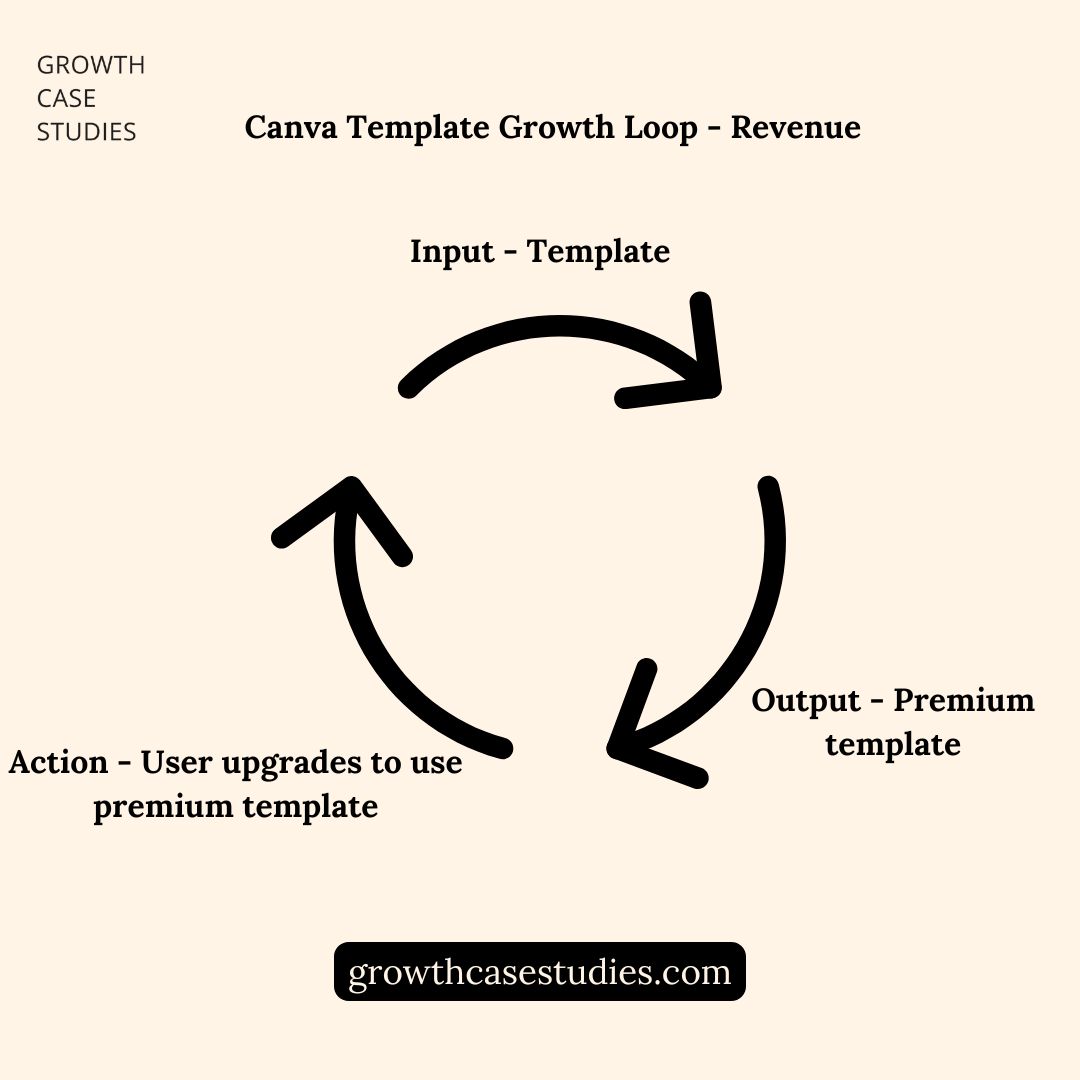
This tiered system not only enhances the user experience by offering a broader selection of templates but also serves as a key revenue model for Canva, incentivising users to subscribe to premium content and advanced features.
Conclusion
When we think about the pirate framework, growth loops, or the growth funnel, we often envision one outcome. This is a great way to approach marketing campaigns and campaign ideation. But to deliver better value to customers and the business, it helps to consider product features that can drive multiple parts of the AAARRR framework. Canva templates are a perfect example of a multi-touch product feature that drives growth beyond the traditional funnel framework.
Small Budget, Big Impact: Outsmart Your Larger Competitors
Being outspent doesn't mean being outmarketed. Our latest resource showcases 15 small businesses that leveraged creativity instead of cash to achieve remarkable marketing wins against much larger competitors.
Proven techniques for standing out in crowded markets without massive budgets
Tactical approaches that turn resource constraints into competitive advantages
Real-world examples of small teams creating outsized market impact
Ready to level the playing field? Download now to discover the exact frameworks these brands used to compete and win.




Reply